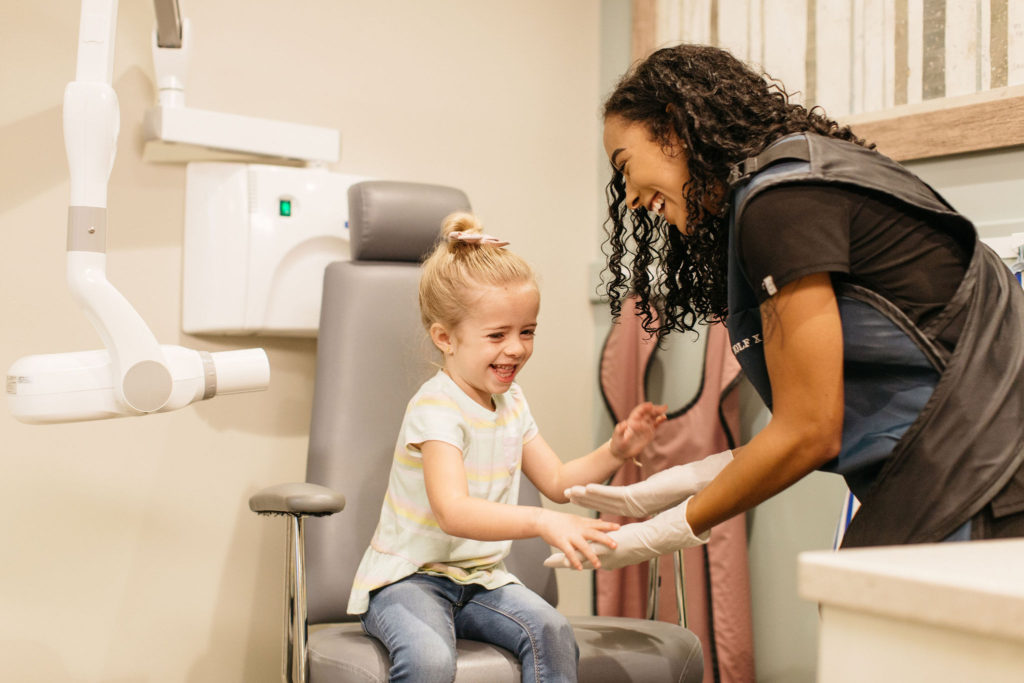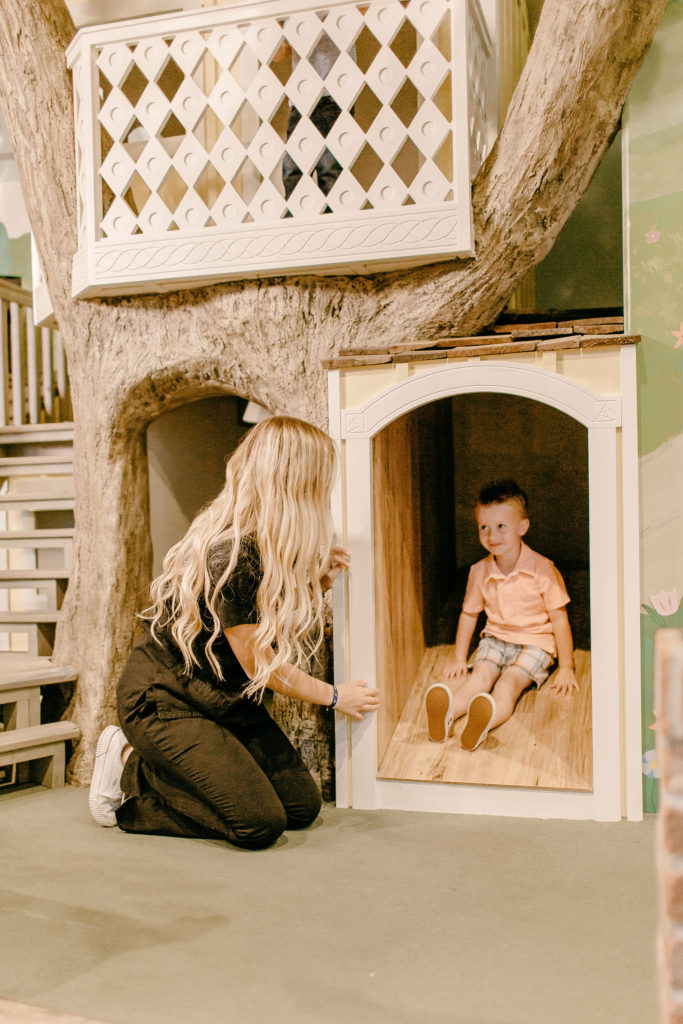Pulptomies
What is a Pulpotomy?
To give you an explanation of the meaning of a pulpotomy; we must first explain a bit more about the tooth. Inside of each tooth, beneath the enamel, sits a cluster of nerves and blood vessels. This part of the tooth, we call the “pulp”. When cavities or tooth decay have been left too long untreated, they may penetrate through the enamel and begin affecting the “pulp” of the tooth. This is the part of the tooth where the nerves are housed. It is not uncommon for cavities in primary teeth to reach the pulp of the tooth.
When this happens, your child will tell you their tooth or teeth hurt, and they may need a therapeutic pulpotomy.

What is the Process for Doing a Pulpotomy in a Child?
Performing a pediatric dentistry pulpotomy is a service we are fully qualified to perform in a professional and tranquil setting for you and your child. The pulpotomy procedure involves making a hole in the enamel of the tooth to remove the cavity.
When the removal of the cavity exposes the pulp, we must then remove any infected pulp. If there is any remaining healthy pulp, it is then treated with a clinically tested medication that will provide long term healing. This medication applied serves to calm the nerves of the tooth that reside within it, and to help prevent any bacteria from growing or spreading to the root of the tooth.
A protective cap will then be applied to protect and seal-in whatever healthy pulp remains. The protective cap may most likely be a crown, especially if the pulpotomy performed is on a permanent tooth. However, if the tooth involved is a primary tooth with an expected lifespan of two years or less, the hole is small enough, and enough enamel remains intact, a composite filling may be used.

Is a Pediatric Dental Pulpotomy the Same as a Baby Root Canal?
Yes. A pediatric pulpotomy is often referred to as a baby root canal.
Is it Serious?
It is important to get in to see us if your child reports a tooth ache. When a cavity reaches that cluster of nerves, the pulp will begin to decay. In worst case scenarios, the decay can reach the root of the tooth and form an abscess. Abscesses are incredibly painful and can cause bone damage to the jaw.
How do I Know if my Child Needs a Pulpotomy?
When you come in to see us after your child’s report of a tooth ache, we will conduct an interview and examination with you and your child. We will review your child’s dental history and discuss the symptoms your child is reporting. We will ask you various questions about the tooth in question: How intense is the pain coming from the tooth? How often is your child having the tooth pain? Is it continuous? Does anything give the pain relief? Then we will examine the tooth in question. We may then perform radiographs (X-rays) to determine the state of the pulp within the tooth.

Will the Pulpotomy Treatment be Visible After it is Completed?
The protective cap applied can be a stainless-steel crown, or a white zirconia crown. We will discuss this with you prior to the procedure to determine the best option for your child’s needs. Alternatively, if we use only a composite resin to fill the hole after the pulpotomy therapy, that composite typically matches the color of the tooth and would not be noticeable.
Will my Child have any Pain After the Procedure is Completed?
Your child should have immediate relief following the procedure. Our expectation is that all your child’s pain should wane immediately after the procedure and be fully gone within a few days following. We will discuss with you appropriate steps to take following the procedure to mitigate any lingering pain in the days after.
What about pain during the procedure?
We can administer a local anesthesia to numb the involved area and the tooth in order to perform the procedure painlessly. Also, our pediatric dentists are highly trained in in-office sedation. We offer four different sedation options and will talk with you about your child’s needs to determine what is appropriate for your child. We have performed over 25,000 sedations in our years of service to our community. If you would like to read more information about that; please visit our sedation page.
If it’s Happening to a Primary Tooth, Why Save it?
The problem with simply extracting an infected primary tooth is the timing. If a primary tooth vacates your child’s mouth earlier than what would naturally occur, there can be consequences. We want your child’s ability to speak, chew foods, and smile to be uninhibited: their primary teeth are vital for those functions. We want the proper spaces in your child’s mouth to be maintained for the permanent teeth to come in where they need to be and be aligned. Primary teeth serve to preserve the spaces in the jaw for the permanent teeth to erupt. When primary teeth are extracted prematurely the remaining primary teeth will close in on the open space. We want to preserve the shape of your child’s jaw. We want to prevent bone damage to your child’s jaw.
When your child reports a tooth ache it is important to take it seriously and contact us right away. Keep in mind, the worst-case scenario only occurs if the tooth is left untreated for too long. Take your child’s report seriously and contact us.
Dentists on Our Team
Years Combined Experience
In-house Sedations
Patients
Counties Served
Staff members
Don't Wait Any Longer!
Schedule Your Child's Appointment Today








